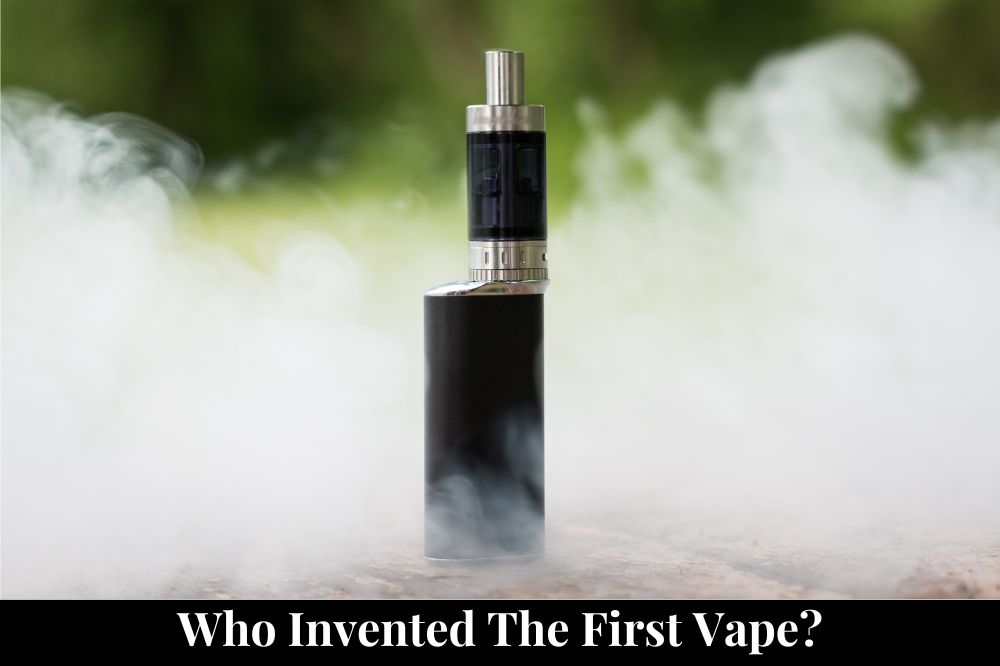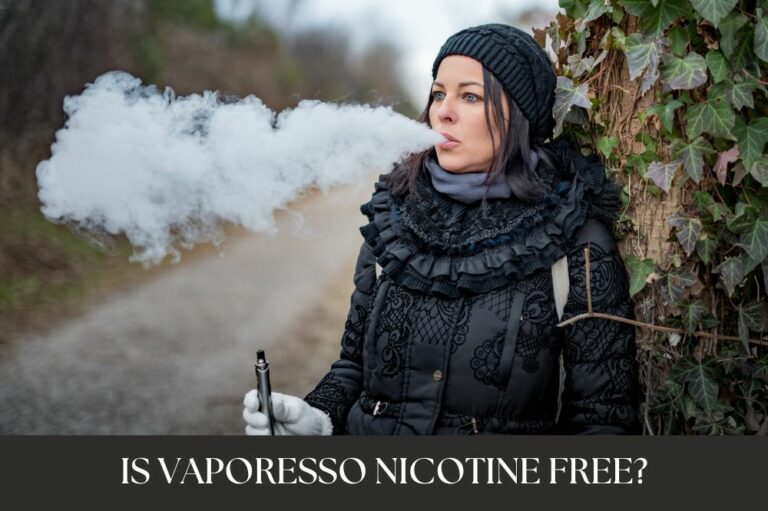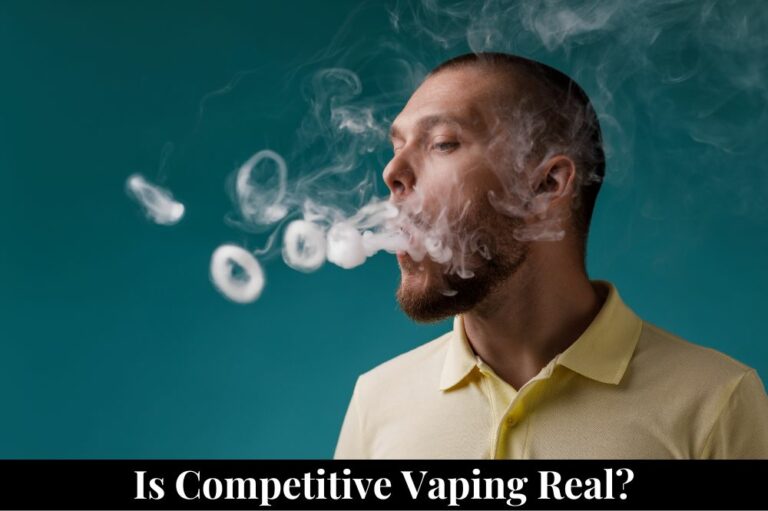
Are you curious about the origins of vaping and who invented the first vape? The history of vaping dates back to the early 20th century, when inventors began experimenting with electric vaporizers for medicinal purposes. In fact, the first US patent for an “electric vaporizer” was filed in 1927 by Joseph Robinson. However, it wasn’t until much later that vaping became popular as an alternative to smoking.
One of the earliest inventors credited with creating a device that closely resembled the modern e-cigarette was Herbert A. Gilbert. Gilbert, a scrap metal dealer from Beaver Falls, reportedly received a patent in 1965 for his invention, which he called the “Smokeless.” The device was a small black aluminum cylinder with a silver tip and did not include nicotine. Despite creating prototypes, Gilbert failed to commercialize his invention, and vaping remained largely unknown to the general public for several more decades.
The Inventor of Vaping
When it comes to the invention of vaping, there is some debate over who should be credited with creating the first electronic cigarette. However, one name that is commonly associated with the invention of vaping is Hon Lik.
Hon Lik
Hon Lik is a Chinese pharmacist who is often credited with inventing the modern electronic cigarette. According to Vaping Post, Hon Lik was inspired to create an alternative to traditional cigarettes after his father died of lung cancer, which was caused by smoking.
In 2003, Hon Lik created the first commercially successful electronic cigarette, which he named the Ruyan (which translates to “like smoke”). The Ruyan was introduced to the Chinese market in 2004 and quickly gained popularity. The device used a battery to heat a liquid solution that contained nicotine, creating a vapor that could be inhaled.
Today, vaping has become a popular alternative to smoking traditional cigarettes, and there are many different types of electronic cigarettes and vaping devices available on the market. While there may be some debate over who should be credited with inventing the first electronic cigarette, Hon Lik is often recognized as a pioneer in the industry.
SPIRITBAR Katana BP10000
- Slender, leather-textured body reminiscent of a katana handle for an authentic samurai feel
- Unique samurai-inspired e-liquid flavor - fruity yet not too sweet, with a luxurious, elegant aroma
- Powerful 650mAh rechargeable battery for extended vaping time
- Large 18ml e-liquid capacity and 10,000 puff capacity
- Advanced mesh coil and e-liquid & power display screens for optimal vaping experience
The special juice captures the essence of the samurai spirit with its rich, smoothly pulsating flavor that brings new satisfaction with every puff. The device's slender, leather-textured design evokes the grip of a samurai's katana, making this product a perfect choice for beginner vapors.
The First Vape Device
The first vape device was invented by Herbert A. Gilbert in 1963. Gilbert’s device closely resembled the modern e-cigarette and he received a patent in 1965. Although his prototypes did not include nicotine, Gilbert’s invention was the first step towards the modern vaping revolution.
Ruyan E-Cigarette
However, it wasn’t until 2003 that the first commercially successful e-cigarette was invented by Chinese pharmacist Hon Lik. The Ruyan e-cigarette was the first device to use a heating element to vaporize a liquid solution containing nicotine. This invention revolutionized the way people smoked and provided a safer alternative to traditional cigarettes.
SPIRITBAR Jack’s Flask 9000 Puffs
- Stylish pirate flask-shaped body providing an exciting vaping experience
- Delivering up to 9000 puffs per device
- 20ml e-liquid capacity with 50mg nicotine strength for satisfying throat hit
- Specialized pirate-themed e-juice flavors for rich, swirling taste
- Premium mesh coil optimizes flavor profile for maximum vaping enjoyment
This disposable vape captures the daring spirit of the high seas with its flask styling and signature pirate e-juice flavors. The extraordinary battery life provides 9000 indulgent puffs for extended vaping pleasure. Live boldly and freely with the Jack's Flask - a legendary vaping experience fit for a pirate's adventures.
The Ruyan e-cigarette quickly gained popularity in China and spread to other countries. Today, e-cigarettes are used by millions of people around the world as a smoking cessation aid or as a safer alternative to traditional cigarettes.
In conclusion, Herbert A. Gilbert’s invention in 1963 paved the way for modern vaping, but it was Hon Lik’s invention of the Ruyan e-cigarette in 2003 that truly revolutionized the industry.
The Reason Behind the Invention
When it comes to the invention of the first vape, there were a few reasons behind it. In this section, we’ll explore the motivations that led to the creation of the first vape.
Personal Motivation
One of the main reasons behind the invention of the first vape was personal motivation. Herbert A. Gilbert, the man who invented the first electronic cigarette in 1963, was a heavy smoker himself. He was concerned about the health risks associated with smoking and wanted to find a way to enjoy the sensation of smoking without the harmful effects.
Public Health Concerns
Another reason behind the invention of the first vape was public health concerns. In recent years, there has been an increasing awareness of the harmful effects of smoking on public health. Governments and health organizations around the world have been taking steps to reduce smoking rates and improve public health.
The invention of the first vape offered an alternative to smoking that was less harmful to public health. Vaping does not involve the combustion of tobacco, which produces harmful chemicals that can cause cancer and other health problems. Instead, vaping involves heating a liquid that contains nicotine and other chemicals to produce a vapor that is inhaled.
Overall, the invention of the first vape was driven by a desire to find a safer alternative to smoking. Whether it was personal motivation or public health concerns, the first vape paved the way for a new era of smoking alternatives that are less harmful to our health.
The Evolution of Vaping
Vaping has come a long way since the first prototype was created in the 1960s. Today, there are countless options available for vapers, from basic e-cigarettes to advanced mods and tanks. Here’s a brief overview of the evolution of vaping:
SPIRITBAR Katana BP10000
- Slender, leather-textured body reminiscent of a katana handle for an authentic samurai feel
- Unique samurai-inspired e-liquid flavor - fruity yet not too sweet, with a luxurious, elegant aroma
- Powerful 650mAh rechargeable battery for extended vaping time
- Large 18ml e-liquid capacity and 10,000 puff capacity
- Advanced mesh coil and e-liquid & power display screens for optimal vaping experience
The special juice captures the essence of the samurai spirit with its rich, smoothly pulsating flavor that brings new satisfaction with every puff. The device's slender, leather-textured design evokes the grip of a samurai's katana, making this product a perfect choice for beginner vapors.
From First Generation to Modern Vapes
The first generation of e-cigarettes was relatively simple, consisting of a battery, heating element, and a cartridge filled with e-liquid. These early devices were often disposable and lacked the customization options that modern vapers enjoy.
As vaping became more popular, manufacturers began to innovate and create more advanced devices. Mods, or modified e-cigarettes, emerged as a popular choice for experienced vapers who wanted more control over their vaping experience. Mods often have larger batteries, more powerful heating elements, and customizable settings.
In recent years, pod systems have become increasingly popular. These devices are small, portable, and easy to use, making them a great option for beginners. Pod systems use pre-filled or refillable pods that snap into the device, eliminating the need for messy e-liquid refills.
Overall, the evolution of vaping has been driven by a desire for better performance, customization, and convenience. Whether you’re a beginner or an experienced vaper, there’s a device out there that’s perfect for you.
Impact on Society
The invention of the first vape had a significant impact on society. Here are some of the ways it has affected our lives:
Public Perception
At first, vapes were seen as a healthier alternative to traditional cigarettes. They were marketed as a way to quit smoking and were often used by people who wanted to wean themselves off of nicotine. However, as the popularity of vapes grew, so did concerns about their safety.
Many people began to view vapes as just as harmful as traditional cigarettes, if not more so. This was due in part to a number of high-profile incidents involving exploding batteries and other safety issues. As a result, many cities and states began to enact laws and regulations to restrict the use of vapes in public places.
Health Implications
The long-term health implications of vaping are still being studied, but there is growing evidence that it can have negative effects on the body. For example, studies have shown that vaping can damage the lungs and increase the risk of respiratory problems.
In addition, there are concerns about the chemicals used in vape juice. Some of these chemicals have been linked to cancer and other serious health problems. As a result, many health experts are urging people to avoid vaping altogether.
Despite these concerns, vapes remain popular among many people. Some see them as a way to quit smoking, while others simply enjoy the flavors and the social aspect of vaping. However, it is important to be aware of the potential risks and to make informed decisions about whether or not to use vapes.
Regulations and Legalities
Vaping has been a controversial topic since its inception, and regulations and legalities surrounding it have been constantly evolving. In this section, we will explore the global regulations and their impact on the vape industry.
Global Regulations
Vaping regulations vary from country to country, and it is important to be aware of them before you travel with your vape device. In some countries, vaping is completely banned, while in others, it is only allowed in designated areas. For example, in Australia, the sale of nicotine-containing e-cigarettes is illegal, and in Japan, vaping is only allowed in designated smoking areas.
In the United States, the Food and Drug Administration (FDA) regulates the sale and distribution of vaping products. The FDA requires manufacturers to submit their products for approval before they can be sold on the market. Additionally, the FDA has banned the sale of flavored vaping products in an effort to curb youth vaping.
Impact on Vape Industry
The regulations and legalities surrounding vaping have had a significant impact on the vape industry. The FDA’s regulations have made it more difficult for smaller vape companies to compete with larger ones, as the cost of submitting products for approval can be prohibitively expensive.
The ban on flavored vaping products has also had a significant impact on the industry, as many companies relied on these products for the majority of their sales. Some companies have had to shut down as a result of the ban, while others have had to pivot to other products.
In conclusion, regulations and legalities surrounding vaping are constantly evolving, and it is important to stay up-to-date on them. While they may have a significant impact on the industry, they are ultimately put in place to protect consumers.








